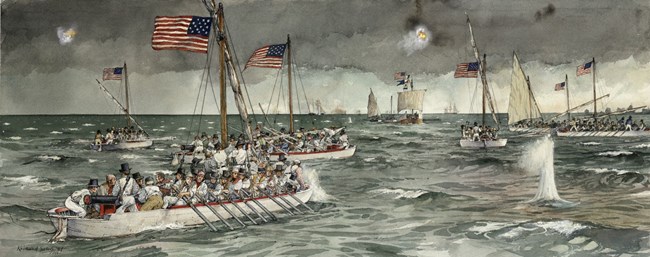
The British intended the Chesapeake campaigns of 1813 and 1814 to draw American forces away from the U.S.-British colonial (now Canada) border, disrupt trade and commerce, and bring the war home to the American people. The Chesapeake region sustained more enemy raids and property losses than any other theater of the war and the people of Southern Maryland bore the brunt. Tobacco was the main cash crop at the time. Growing and harvesting tobacco required a large labor force composed primarily of enslaved people and tenant farmers. As part of the war strategy, the British promised freedom to enslaved African Americans who deserted their owners and joined the British side. This tactic was used by the British to acquire local knowledge and cripple the economy. Roughly 4,000 enslaved men, women and children escaped to the British. Many were trained for the military. Four enslaved people from Sotterley who fled in June 1814 returned to help others escape. Most were taken to freedom in Nova Scotia, the West Indies, or elsewhere in the British Empire when the war ended. Surrounded by water on three sides, British ships and raiding parties had easy access into Southern Maryland. No other part of the Chesapeake experienced more raids or economic devastation than the counties of Calvert, Charles, and St. Mary’s. The British raided farms and plantations, taking livestock and grain to feed their troops, and destroying tobacco crops and warehouses in their strategy of economic warfare. In 1814, the region was home to the largest naval engagement in Maryland waters which entailed some of the firecest fighting of the war. The Chesapeake region overall was slow to recover from the war, and Southern Maryland—hardest hit—took longer than other areas. Property losses ran in the millions of dollars, and for Maryland as a whole, the population fell by nearly 35,000 people. While visiting this region of the trail, make sure to check out trail partners that tell the story of the War of 1812 in southern Maryland. These include Point Lookout State Park, Piney Point Lighthouse, Leonardtown Wharf Public Park, Tudor Hall, Calvert Marine Museum, Jefferson Patterson Park and Museum, Historic Sotterly, and Benedict. |
Last updated: April 19, 2021
